Investigation of Magneto-/Radio-Metric Behavior in Order to Identify an Estimator Model Using K-Means Clustering and Artificial Neural Network (ANN) (Iron Ore Deposit, Yazd, IRAN)
Abstract
1. Introduction
2. Geological Setting of the Studied Area
3. Methodology and Materials
3.1. Raw Data
3.2. K-Means Clustering Method
3.3. Artificial Neural Network (ANN)
4. Results and Discussion
4.1. Behavior Study of Radiometry and Magnetometry Surveys
4.2. Radiometric Measurements Prediction
4.2.1. Estimation by General Regression Neural Network (GRNN)
4.2.2. Estimation by Backpropagation Neural Network (BPNN)
5. Conclusions
Author Contributions
Funding
Data Availability Statement
Acknowledgments
Conflicts of Interest
References
- Mohammadi, N.M.; Hezarkhani, A.; Maghsoudi, A. Application of K-means and PCA approaches to estimation of gold grade in Khooni district (central Iran). Acta Geochim. 2018, 37, 102–112. [Google Scholar] [CrossRef]
- Khakmardan, S.; Doodran, R.J.; Shirazy, A.; Shirazi, A.; Mozaffari, E. Evaluation of Chromite Recovery from Shaking Table Tailings by Magnetic Separation Method. Open J. Geol. 2020, 10, 1153–1163. [Google Scholar] [CrossRef]
- Shirazi, A.; Shirazy, A.; Saki, S.; Hezarkhani, A. Geostatistics Studies and Geochemical Modeling Based on Core Data, Sheytoor Iron Deposit, Iran. J. Geol. Resour. Eng. 2018, 6, 124–133. [Google Scholar]
- Ziaii, M.; Safari, S.; Timkin, T.; Voroshilov, V.; Yakich, T. Identification of geochemical anomalies of the porphyry–Cu deposits using concentration gradient modelling: A case study, Jebal-Barez area, Iran. J. Geochem. Explor. 2019, 199, 16–30. [Google Scholar] [CrossRef]
- Malyszko, D.; Wierzchon, S.T. Standard and Genetic K-means Clustering Techniques in Image Segmentation. In Proceedings of the 6th International Conference on Computer Information Systems and Industrial Management Applications, Elk, Poland, 28–30 June 2007; IEEE Computer Society: Washington, DC, USA, 2007; pp. 299–304. [Google Scholar]
- Khakmardan, S.; Shirazi, A.; Shirazy, A.; Hosseingholi, H. Copper Oxide Ore Leaching Ability and Cementation Behavior, Mesgaran Deposit in IRAN. Open J. Geol. 2018, 8, 841–858. [Google Scholar] [CrossRef][Green Version]
- Doodran, R.J.; Khakmardan, S.; Shirazi, A.; Shirazy, A. Minimalization of Ash from Iranian Gilsonite by Froth Flotation. J. Miner. Mater. Charact. Eng. 2021, 9, 1–13. [Google Scholar] [CrossRef]
- Abolhassani, B.; Salt, J.E. A simplex K-means algorithm for radio-port placement in cellular networks. In Proceedings of the Canadian Conference on Electrical and Computer Engineering, Canada, University of Saskatchewan, Saskatoon, SK, Canada, 1–4 May 2005; pp. 2117–2121. [Google Scholar]
- Wang, Q.; Deng, J.; Liu, H.; Yang, L.; Wan, L.; Zhang, R. Fractal models for ore reserve estimation. Ore Geol. Rev. 2010, 37, 2–14. [Google Scholar] [CrossRef]
- Shirazy, A.; Ziaii, M.; Hezarkhani, A.; Timkin, T. Geostatistical and Remote Sensing Studies to Identify High Metallogenic Potential Regions in the Kivi Area of Iran. Minerals 2020, 10, 869. [Google Scholar] [CrossRef]
- Nasor, M.; Obaid, W. Detection and Localization of Early-Stage Multiple Brain Tumors Using a Hybrid Technique of Patch-Based Processing, k-means Clustering and Object Counting. Int. J. Biomed. Imaging 2020, 2020, 1–9. [Google Scholar] [CrossRef]
- Khorshidi, N.; Parsa, M.; Lentz, D.R.; Sobhanverdi, J. Identification of heavy metal pollution sources and its associated risk assessment in an industrial town using the K-means clustering technique. Appl. Geochem. 2021, 135, 105113. [Google Scholar] [CrossRef]
- Shirazi, A.; Hezarkhani, A.; Shirazy, A. Remote Sensing Studies for Mapping of Iron Oxide Regions, South of Kerman, IRAN. Int. J. Sci. Eng. Appl. 2018, 7, 45–51. [Google Scholar] [CrossRef]
- Shirazi, A.; Shirazy, A.; Karami, J. Remote sensing to identify copper alterations and promising regions, Sarbishe, South Khorasan, Iran. Int. J. Geol. Earth Sci. 2018, 4, 36–52. [Google Scholar]
- Shirazy, A.; Shirazi, A.; Heidar laki, S.; Ziaii, M. Exploratory Remote Sensing Studies to Determine the Mineralization Zones around the Zarshuran Gold Mine. Int. J. Sci. Eng. Appl. 2018, 7, 274–279. [Google Scholar] [CrossRef]
- Yang, J.; Zhuang, Y.; Wu, F. ESVC-based extraction and segmentation of texture features. Comput. Geosci. 2012, 49, 238–247. [Google Scholar] [CrossRef]
- Dumuid, D.; Olds, T.; Lewis, L.K.; Martin-Fernández, J.A.; Barreira, T.; Broyles, S.; Chaput, J.-P.; Fogelholm, M.; Hu, G.; Kuriyan, R.; et al. The adiposity of children is associated with their lifestyle behaviours: A cluster analysis of school-aged children from 12 nations. Pediatr. Obes. 2018, 13, 111–119. [Google Scholar] [CrossRef] [PubMed]
- Ghezelbash, R.; Maghsoudi, A.; Carranza, E.J.M. Mapping of single- and multi-element geochemical indicators based on catchment basin analysis: Application of fractal method and unsupervised clustering models. J. Geochem. Explor. 2019, 199, 90–104. [Google Scholar] [CrossRef]
- Shirazi, A.; Hezarkhani, A.; Shirazy, A. Exploration Geochemistry Data-Application for Cu Anomaly Separation Based On Classical and Modern Statistical Methods in South Khorasan, Iran. Int. J. Sci. Eng. Appl. 2018, 7, 39–44. [Google Scholar] [CrossRef]
- Sfidari, E.; Kadkhodaie-Ilkhchi, A.; Najjari, S. Comparison of intelligent and statistical clustering approaches to predicting total organic carbon using intelligent systems. J. Pet. Sci. Eng. 2012, 86, 190–205. [Google Scholar] [CrossRef]
- Wegner, T.; Hussein, T.; Hämeri, K.; Vesala, T.; Kulmala, M.; Weber, S. Properties of aerosol signature size distributions in the urban environment as derived by cluster analysis. Atmos. Environ. 2012, 61, 350–360. [Google Scholar] [CrossRef]
- Isaeva, E.R.; Voroshilov, V.G.; Timkin, T.V.; Ziaii, M. Geochemical criteria to identify reservoirs and to forecast their oil and gas content in terrigenous deposits in Pur-Tazovskoy oil-bearing field. Bull. Tomsk. Polytech. Univ. Geo Assets Eng. 2018, 329, 132–141. [Google Scholar]
- Ghannadpour, S.S.; Hezarkhani, A.; Farahbakhsh, E. An investigation of Pb geochemical behavior respect to those of Fe and Zn based on k-Means clustering method. J. Tethys 2013, 1, 291–302. [Google Scholar]
- Mora, J.L.; Armas-Herrera, C.M.; Guerra, J.A.; Rodríguez-Rodríguez, A.; Arbelo, C.D. Factors affecting vegetation and soil recovery in the Mediterranean woodland of the Canary Islands (Spain). J. Arid Environ. 2012, 87, 58–66. [Google Scholar] [CrossRef]
- Al-Alawi, S.M.; Tawo, E.E. Application of Artificial Neural Networks in Mineral Resource Evaluation. J. King Saud Univ. Eng. Sci. 1998, 10, 127–138. [Google Scholar] [CrossRef]
- Shirazi, A.; Shirazy, A.; Saki, S.; Hezarkhani, A. Introducing a software for innovative neuro-fuzzy clustering method named NFCMR. Glob. J. Comput. Sci. Theory Res. 2018, 8, 62–69. [Google Scholar] [CrossRef]
- Shirazy, A.; Ziaii, M.; Hezarkhani, A. Geochemical Behavior Investigation Based on K-means and Artificial Neural Network Prediction for Copper, in Kivi region, Ardabil province, IRAN. Iran. J. Min. Eng. 2020, 14, 96–112. [Google Scholar]
- Hao, X.; Yang, Y.; Li, Y.; Wang, Q. Magnetic anomaly characteristics and iron ore prediction of Chengwu-Caoxian county area in Shandong province, China. Prog. Geophys. 2018, 33, 613–619. [Google Scholar]
- Kozhevnikov, N.O.; Kharinsky, A.V.; Snopkov, S.V. Geophysical prospection and archaeological excavation of ancient iron smelting sites in the Barun-Khal valley on the western shore of Lake Baikal (Olkhon region, Siberia). Archaeol. Prospect. 2019, 26, 103–119. [Google Scholar] [CrossRef]
- Saavedra, S.; Rincón, P. Interpretation of geophysical anomalies for mineral resource potential evaluation in Colombia: Examples from the northern Andes and Amazonian regions. Boletín Geológico 2020, 46, 5–22. [Google Scholar]
- Martin, P.G.; Connor, D.T.; Estrada, N.; El-Turke, A.; Megson-Smith, D.; Jones, C.P.; Kreamer, D.K.; Scott, T.B. Radiological identification of near-surface mineralogical deposits using low-altitude unmanned aerial vehicle. Remote. Sens. 2020, 12, 3562. [Google Scholar] [CrossRef]
- Jekeli, C.; Erkan, K.; Huang, O. Gravity vs pseudo-gravity: A comparison based on magnetic and gravity gradient measurements. Gravity Geoid Earth Obs. 2010, 135, 123–127. [Google Scholar]
- Dowling, R.K. Geotourism’s Global Growth. Geoheritage 2011, 3, 1–13. [Google Scholar] [CrossRef]
- Shirazi, A.; Shirazy, A. Introducing Geotourism Attractions in Toroud Village, Semnan Province, IRAN. Int. J. Sci. Eng. Appl. 2020, 9, 79–86. [Google Scholar] [CrossRef]
- Nabatian, G.; Rastad, E.; Neubauer, F.; Honarmand, M.; Ghaderi, M. Iron and Fe–Mn mineralisation in Iran: Implications for Tethyan metallogeny. Aust. J. Earth Sci. 2015, 62, 211–241. [Google Scholar] [CrossRef]
- Ghorbani, M. The Economic Geology of Iran; Springer Geology; Springer: Dordrecht, The Netherlands, 2013. [Google Scholar]
- Ghorbani, M. A Summary of Geology of Iran; Springer: Dordrecht, The Netherlands, 2013; pp. 45–64. [Google Scholar]
- Nabavieh, S.M.; Mehdi Abad, H.T. Geological Map (on Scale 1:100000) 2003; Geological Survey and Mineral Exploration of Iran (GSI): Tehran, Iran, 2003. [Google Scholar]
- Myers, L.; Sirois, M.J. Spearman Correlation Coefficients, Differences between. In Encyclopedia of Statistical Sciences; John Wiley & Sons, Inc.: Hoboken, NJ, USA, 2006. [Google Scholar]
- Alahgholi, S.; Shirazy, A.; Shirazi, A. Geostatistical Studies and Anomalous Elements Detection, Bardaskan Area, Iran. Open J. Geol. 2018, 8, 697–710. [Google Scholar] [CrossRef][Green Version]
- Shirazy, A.; Shirazi, A.; Hezarkhani, A. Predicting gold grade in Tarq 1: 100000 geochemical map using the behavior of gold, Arsenic and Antimony by K-means method. J. Miner. Resour. Eng. 2018, 2, 11–23. [Google Scholar]
- Zhou, S.; Zhou, K.; Wang, J.; Yang, G.; Wang, S. Application of cluster analysis to geochemical compositional data for identifying ore-related geochemical anomalies. Front. Earth Sci. 2018, 12, 491–505. [Google Scholar] [CrossRef]
- Jain, A.K. Data clustering: 50 years beyond K-means. Pattern Recognit. Lett. 2010, 31, 651–666. [Google Scholar] [CrossRef]
- Shirazy, A.; Ziaii, M.; Hezarkhani, A.; Timkin, T.V.; Voroshilov, V.G. Geochemical behavior investigation based on K-means and artificial neural network prediction for titanium and zinc, Kivi region, Iran. Bull. Tomsk Polytech. Univ. Geo Assets Eng. 2021, 332, 113–125. [Google Scholar]
- Saha, S.; Bandyopadhyay, S. A generalized automatic clustering algorithm in a multiobjective framework. Appl. Soft Comput. 2013, 13, 89–108. [Google Scholar] [CrossRef]
- Hezarkhani, A.; Ghannadpour, S.S. Geochemical Behavior Investigation Based on K-Means Clustering: Basics, Concepts and Case Study; LAP LAMBERT Academic Publishing: Frankfurt, Germany, 2015; 60p. [Google Scholar]
- Shirazy, A.; Shirazi, A.; Hezarkhani, A. Behavioral Analysis of Geochemical Elements in Mineral Exploration; LAP LAMBERT Academic Publishing: Saarbrücken, Germany, 2020. [Google Scholar]
- Beale, M.Y.; Hagan, M.T.; Demuth, H.B. Neural Network Toolbox User’s Guide; The MathWorks: Natick, MA, USA, 2010; 846p. [Google Scholar]
- Specht, D.F. A General Regression Neural Network. IEEE Trans. Neural Netw. 1991, 2, 568–576. [Google Scholar] [CrossRef]
- Rooki, R. Application of general regression neural network (GRNN) for indirect measuring pressure loss of Herschel–Bulkley drilling fluids in oil drilling. Measurement 2016, 85, 184–191. [Google Scholar] [CrossRef]
- Mohammadi, N.M.; Hezarkhani, A. Estimation of grade Gold in khooni deposit using the behavior of gold, Arsenic and Antimony elements by clustering K-means method. J. Anal. Numer. Methods Min. Eng. 2015, 5, 77–92. [Google Scholar]
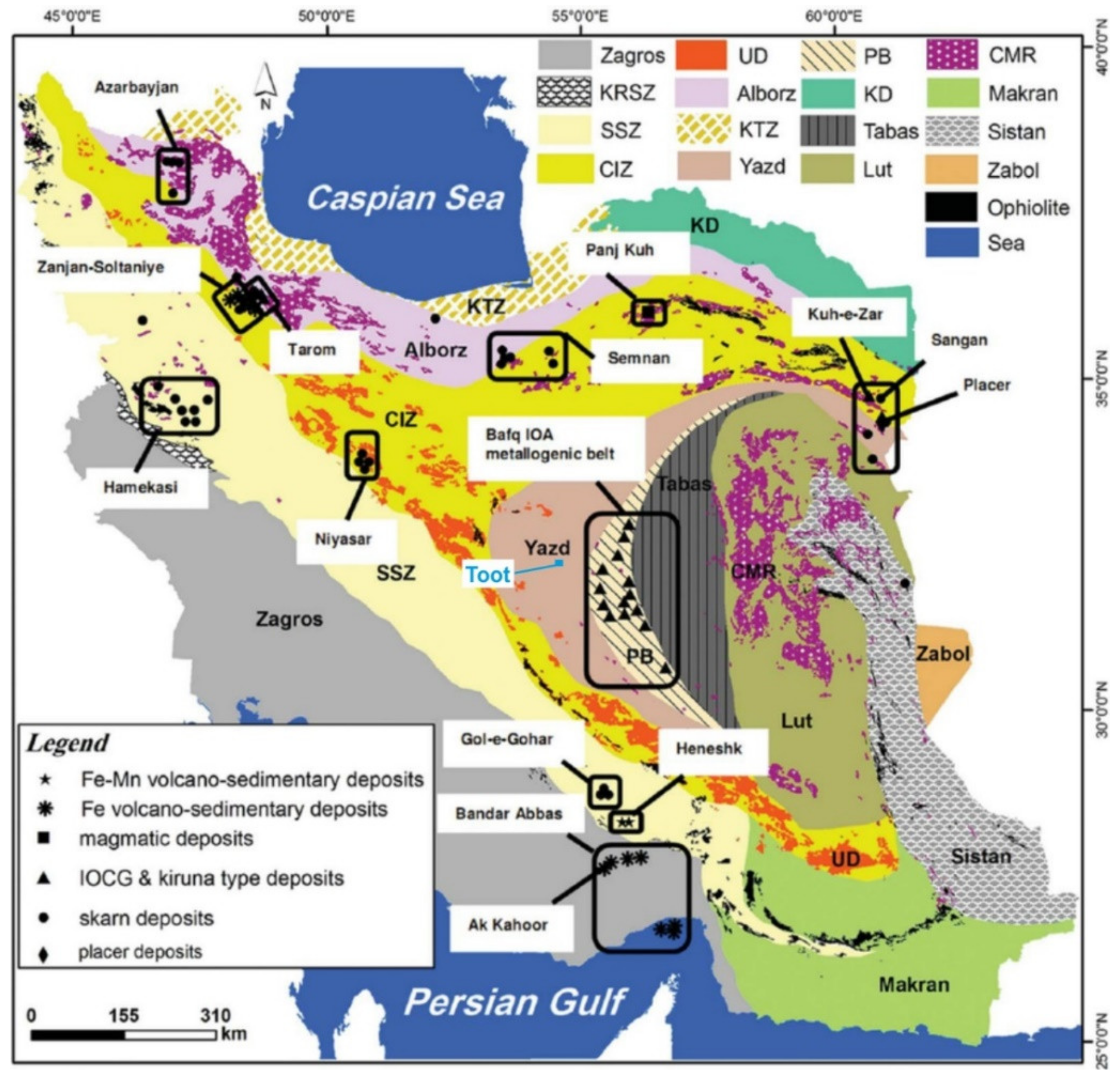
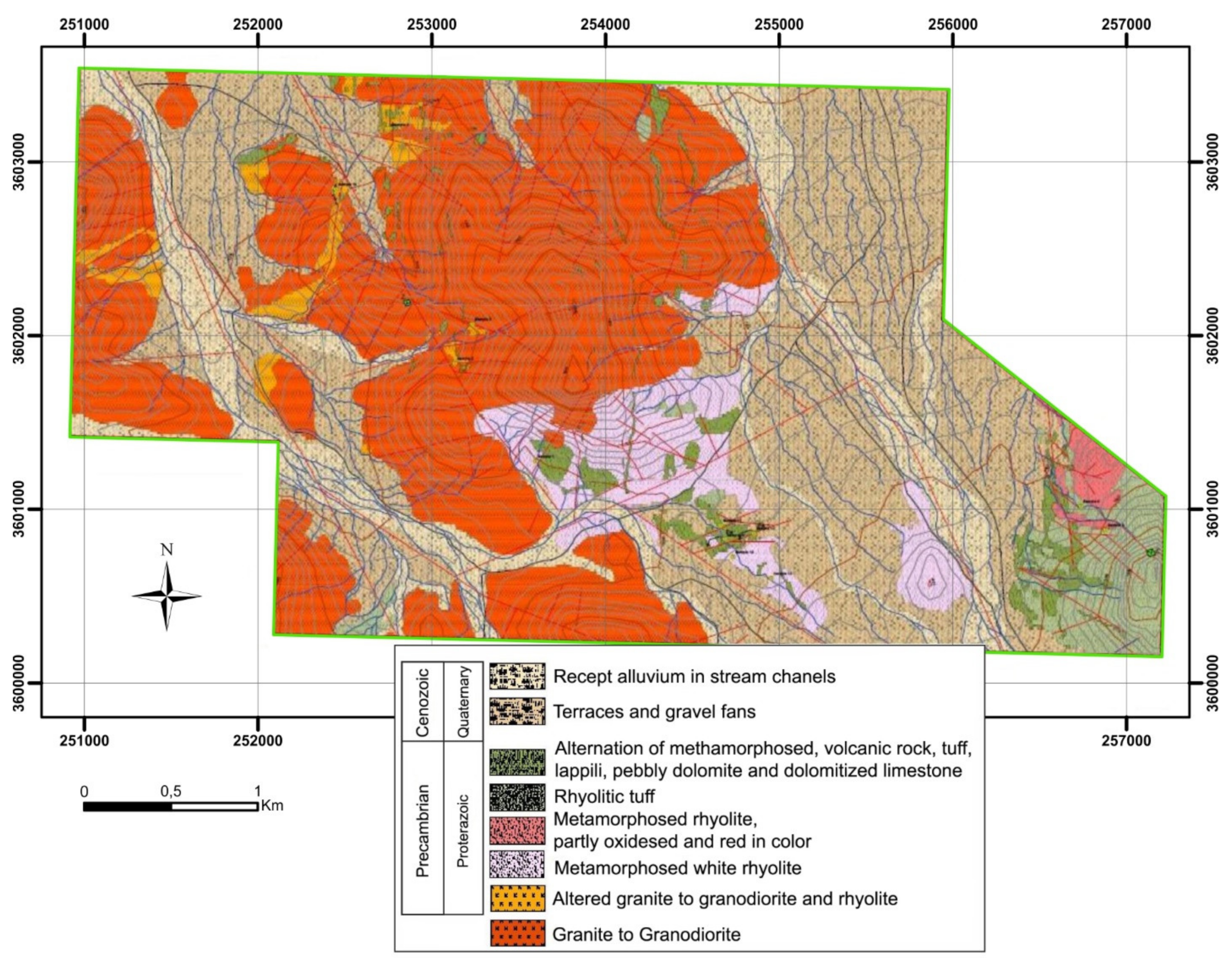
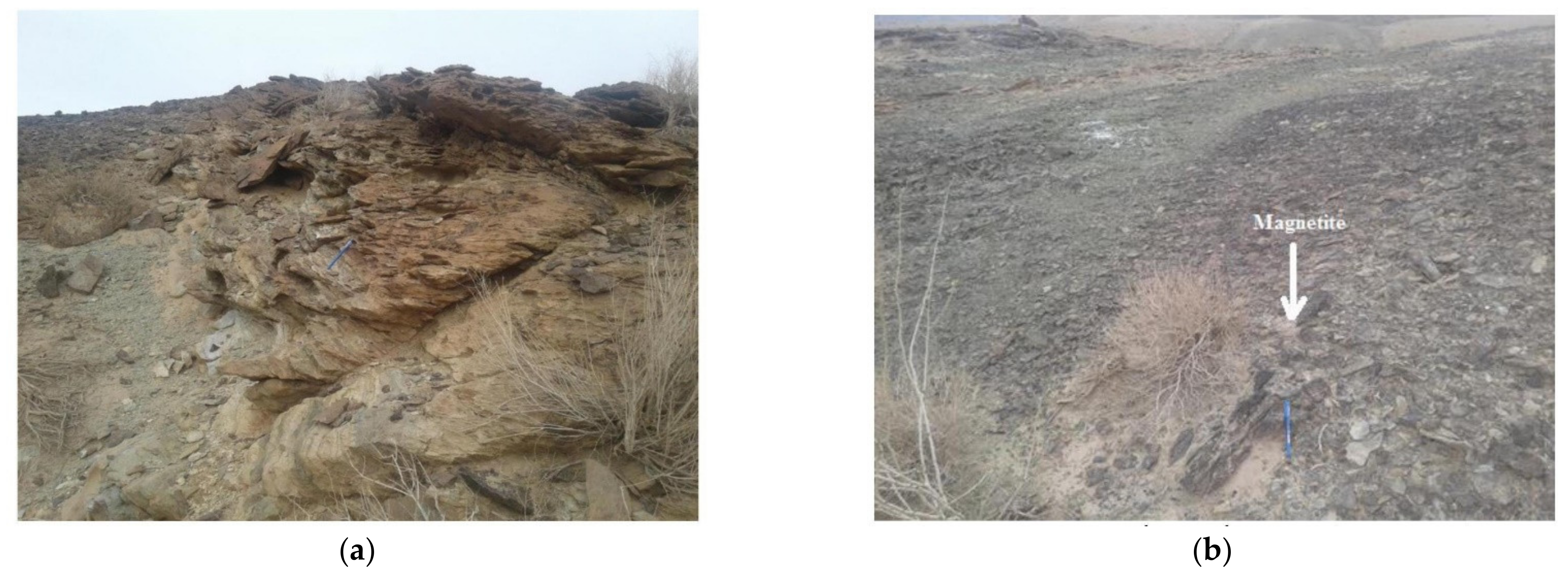
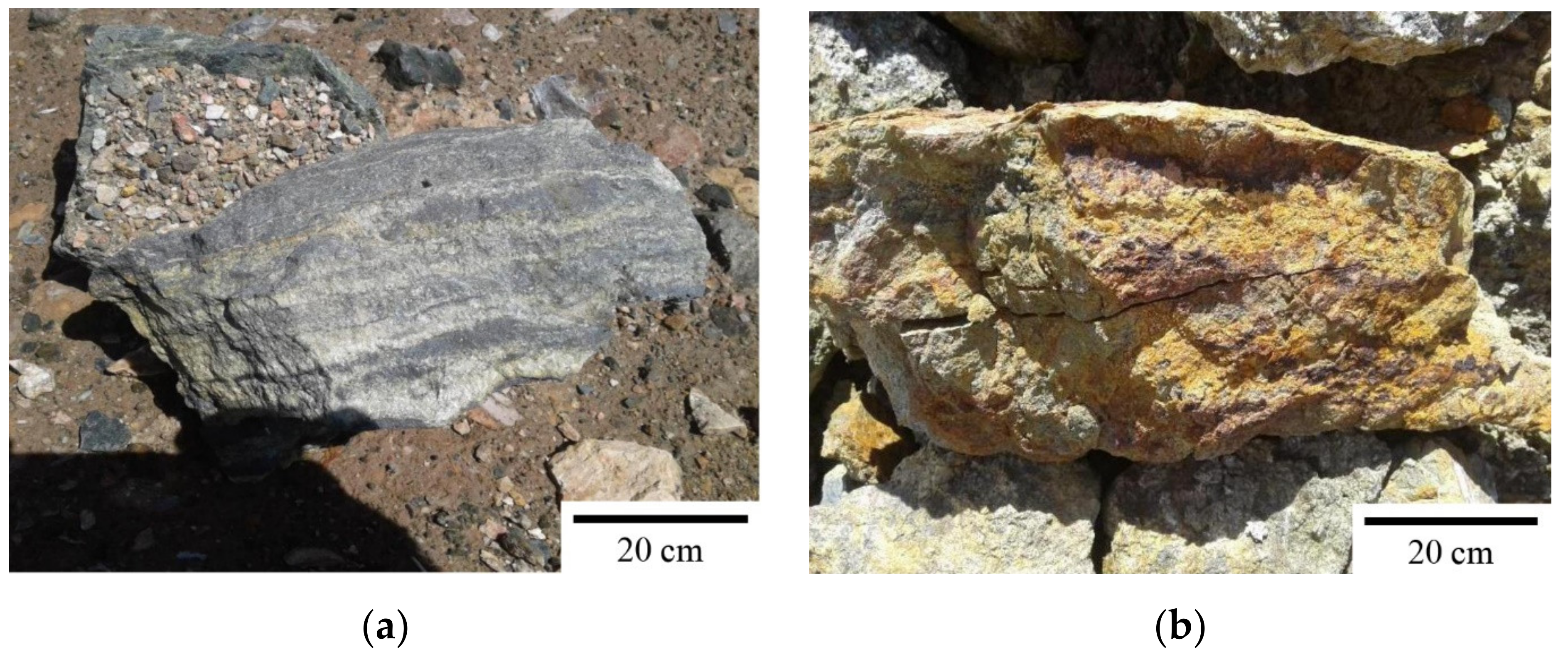
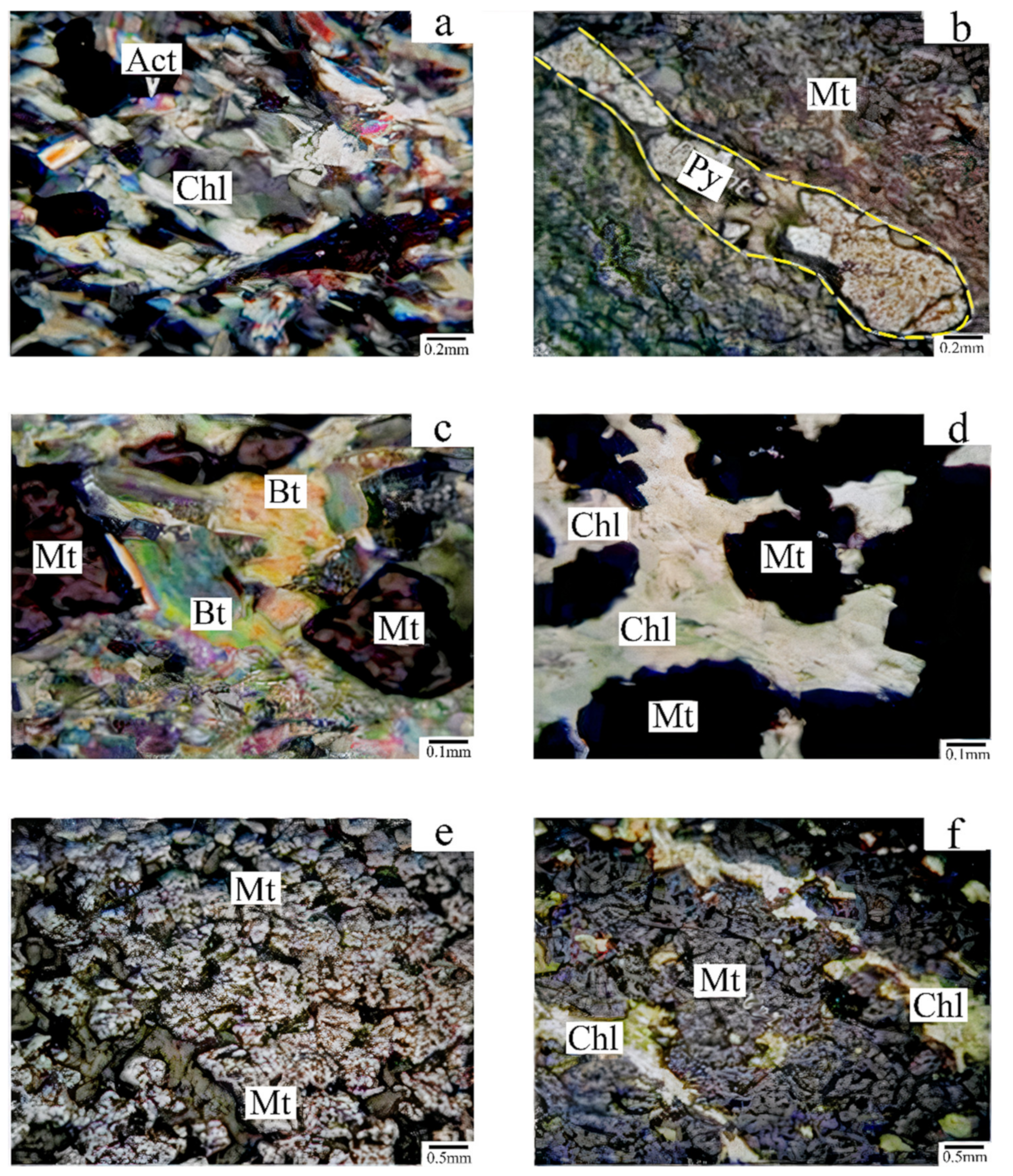
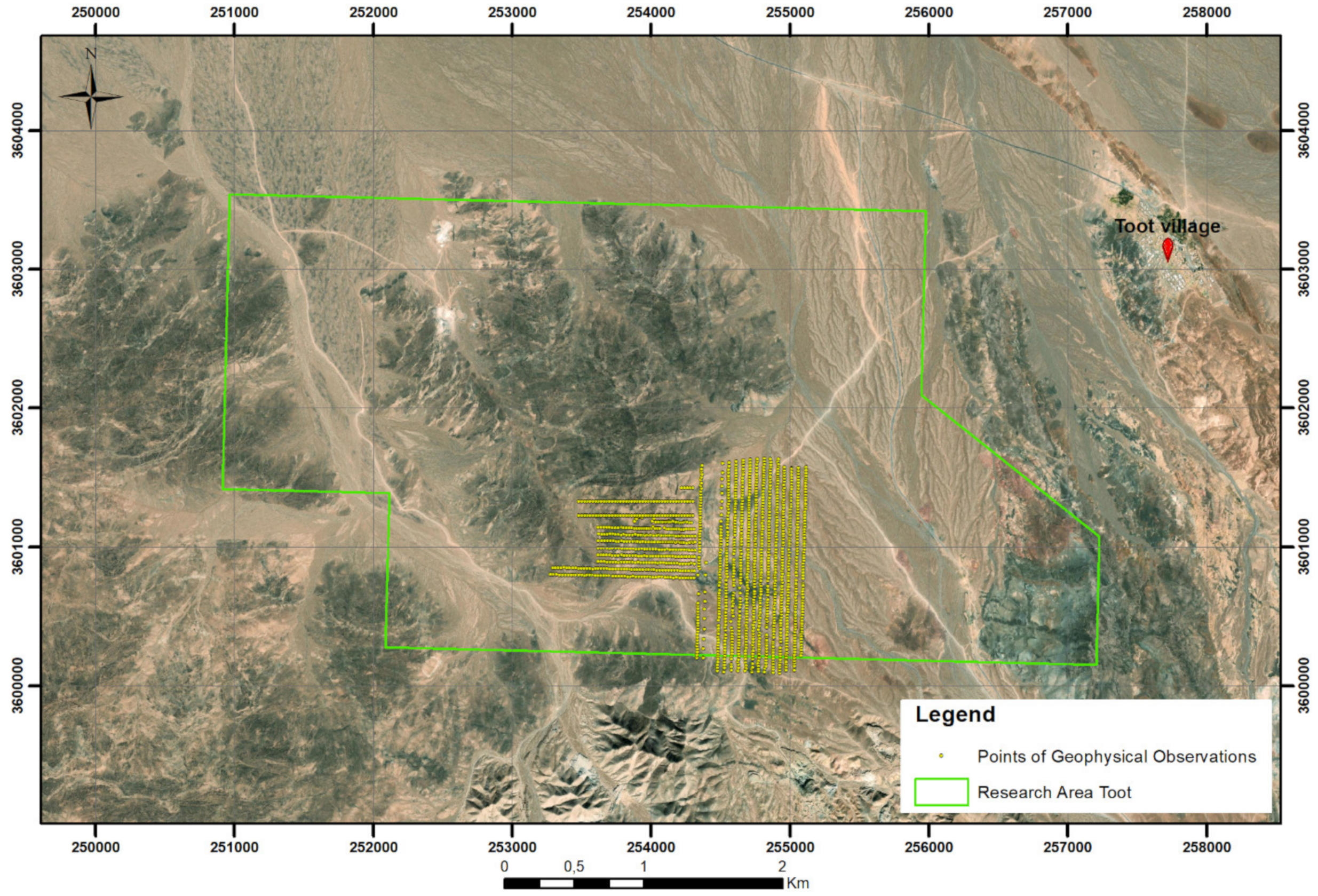
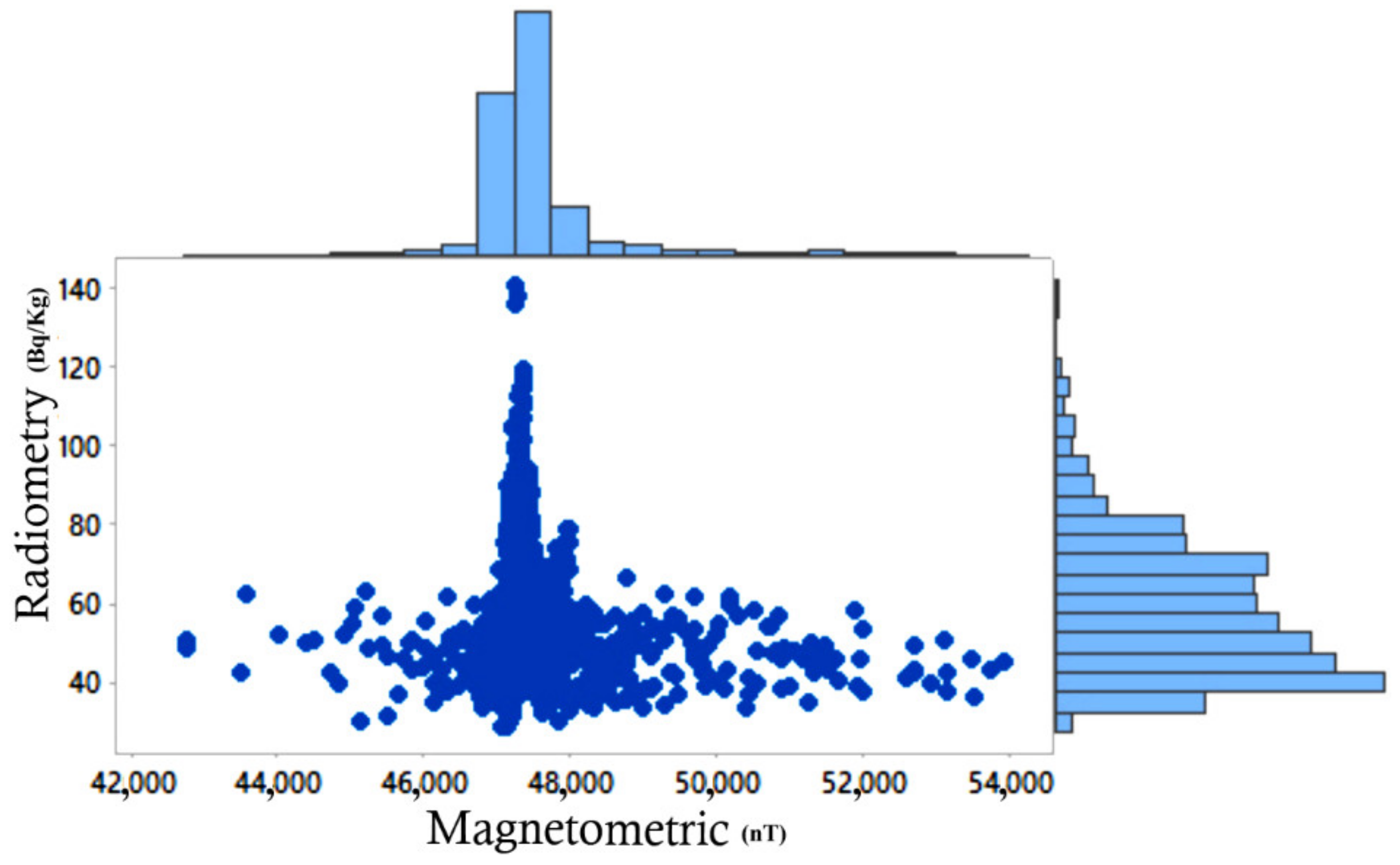
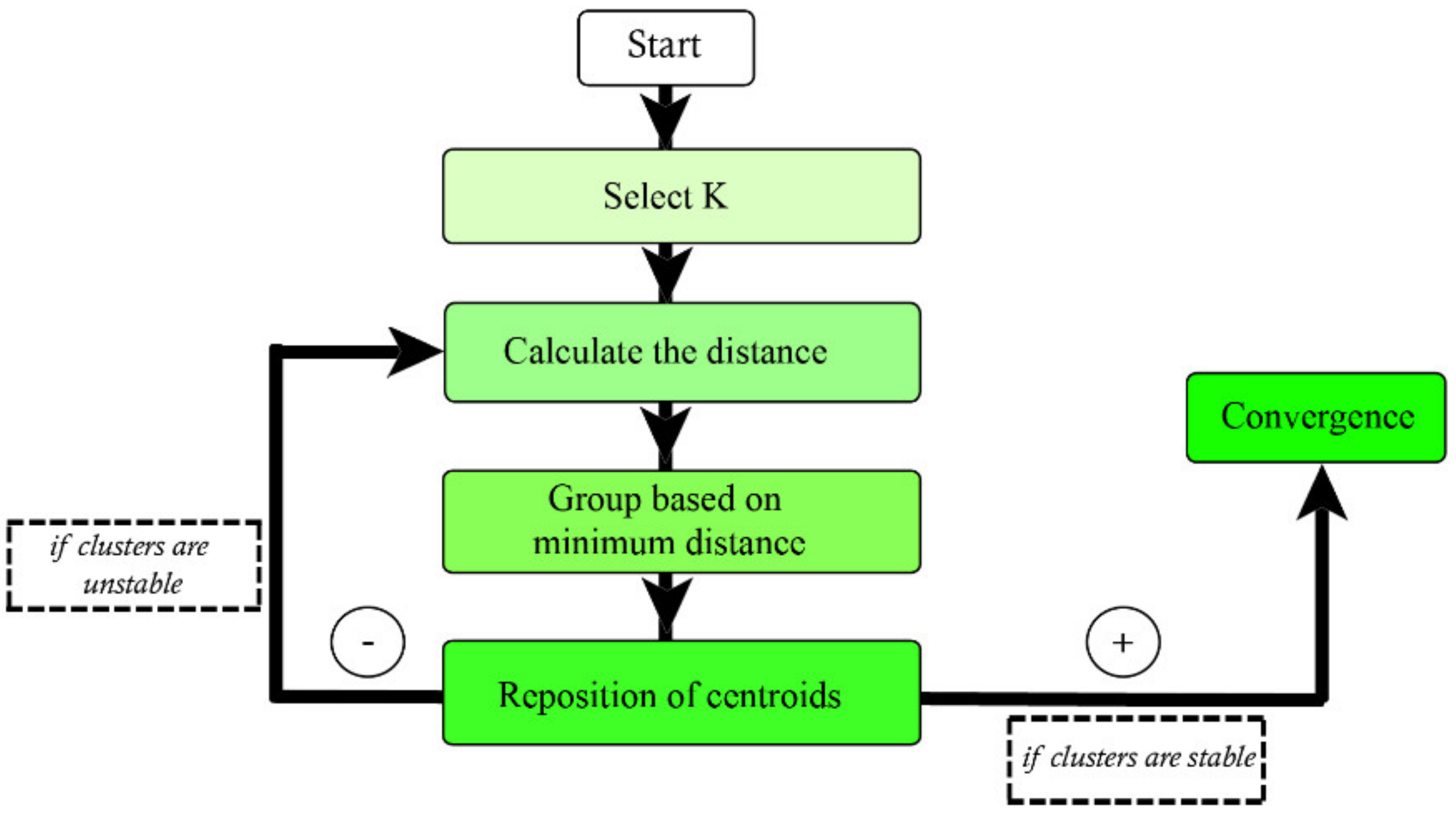
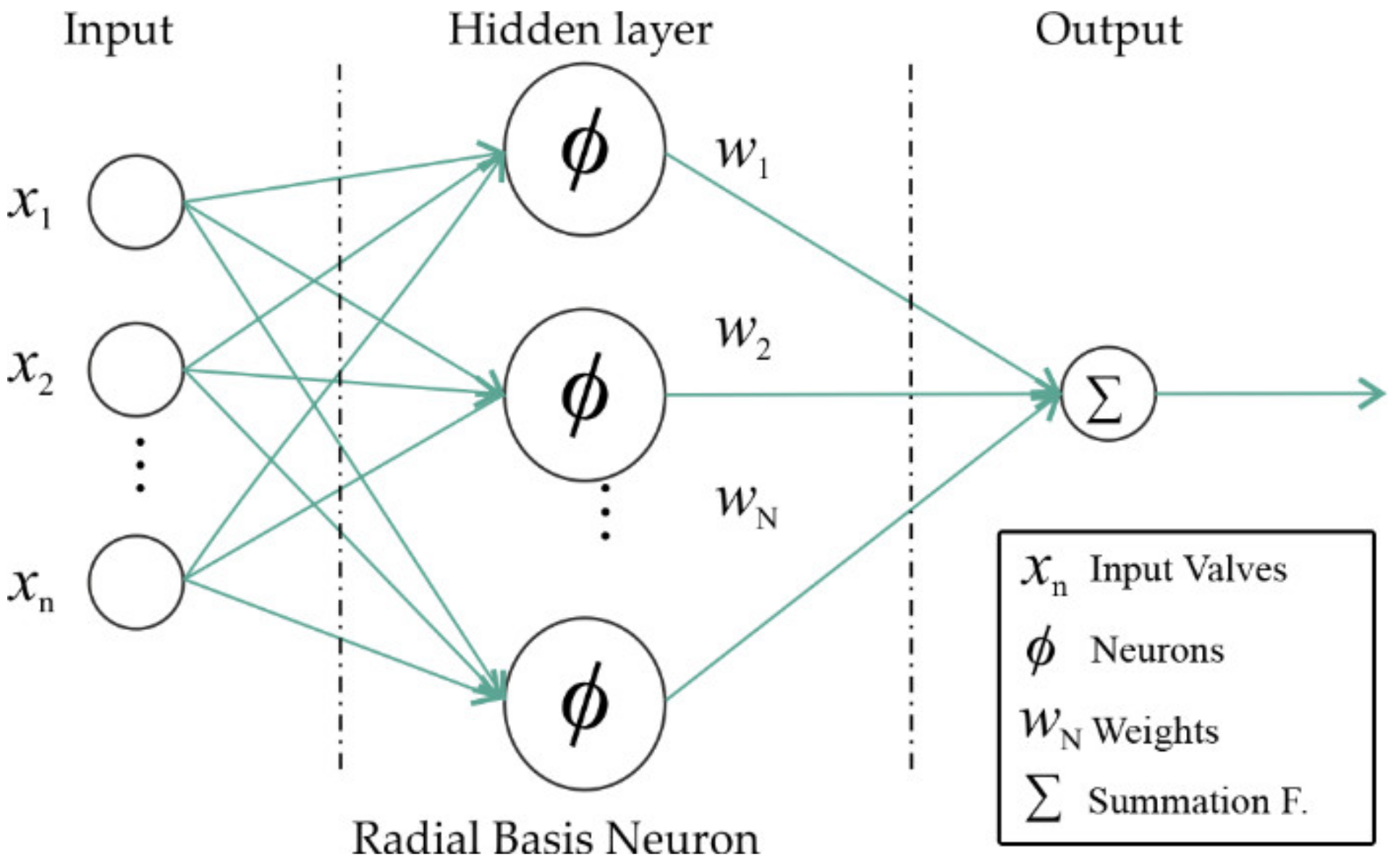
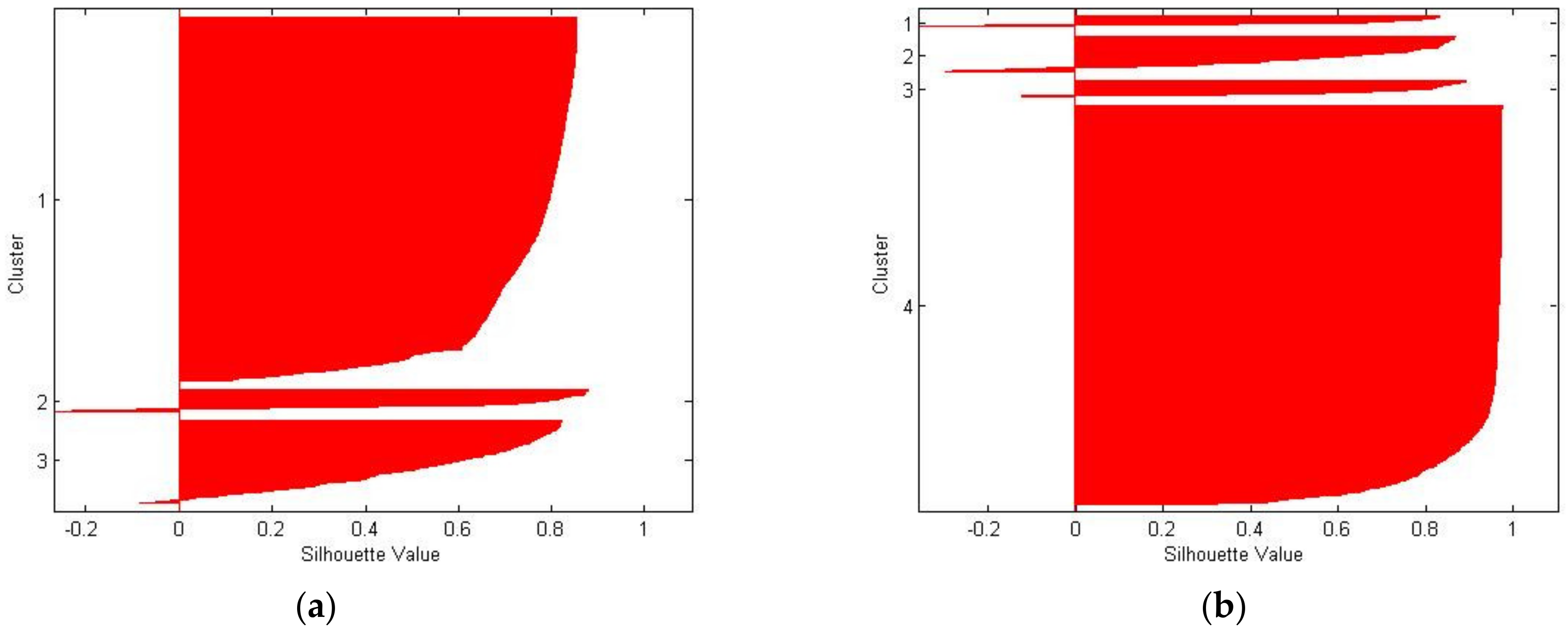
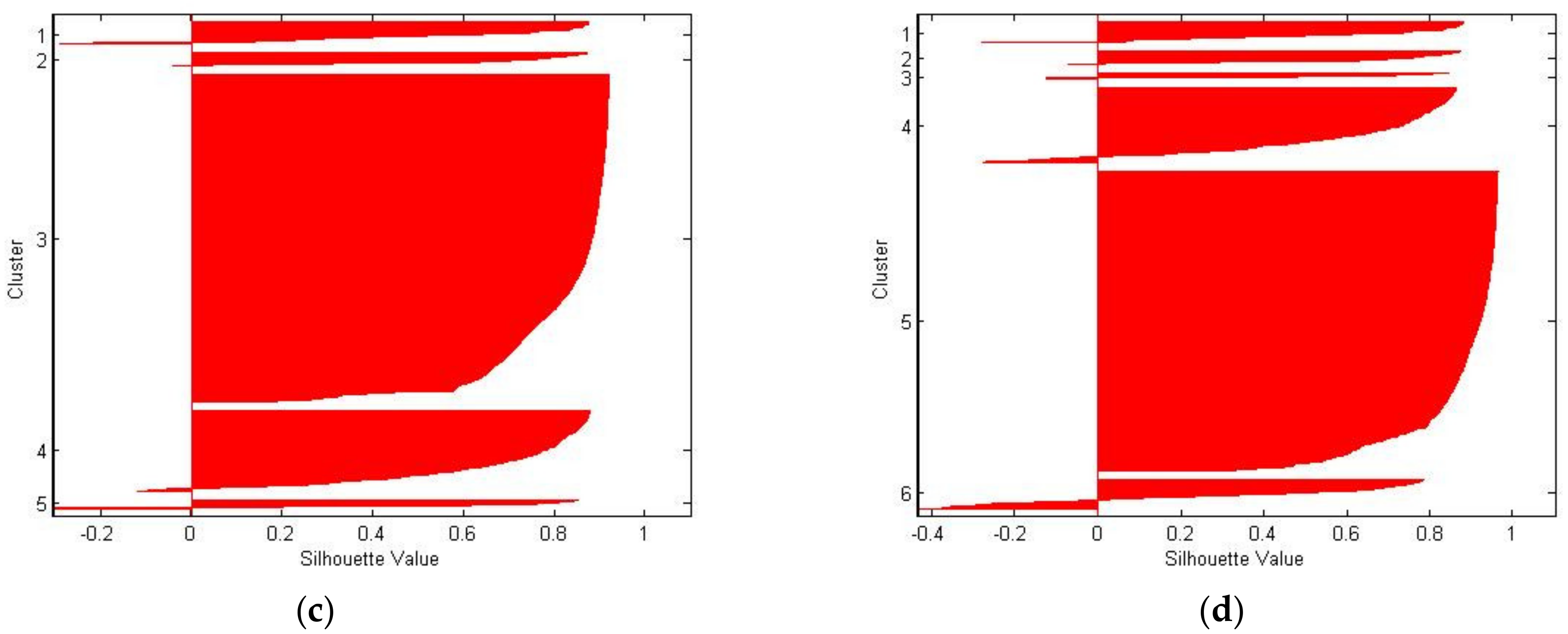
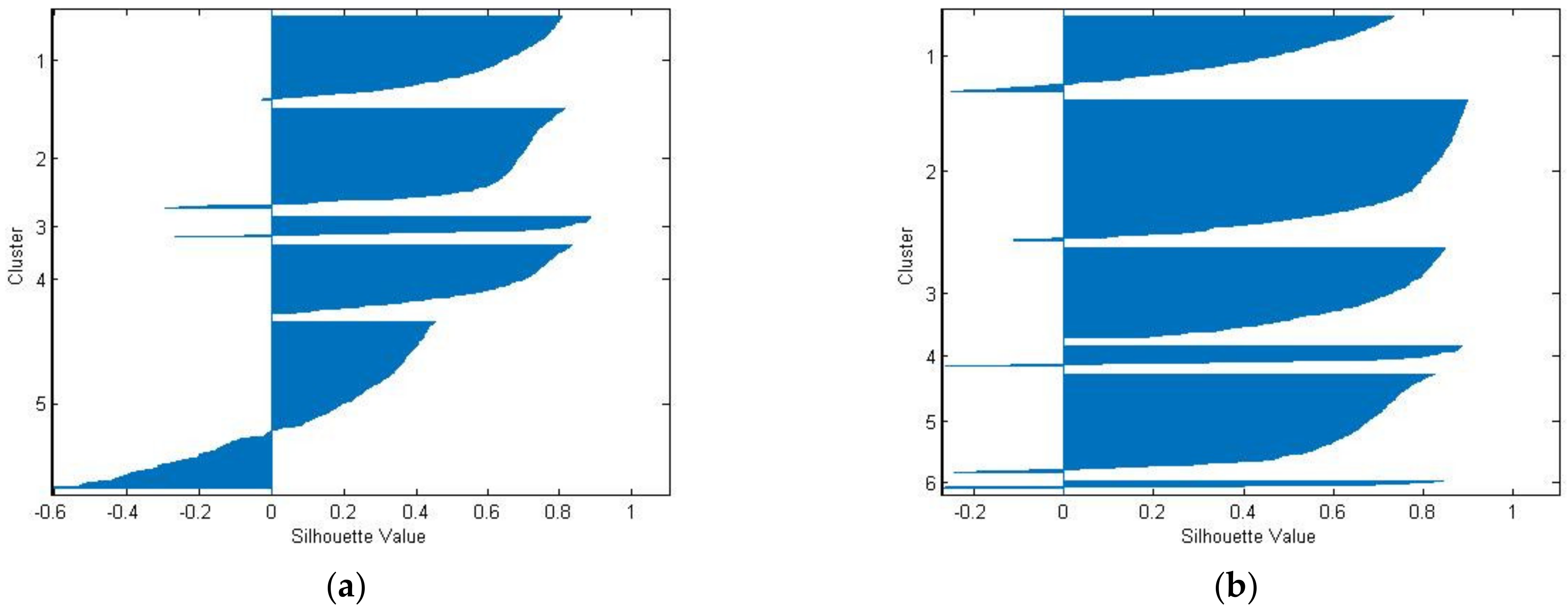

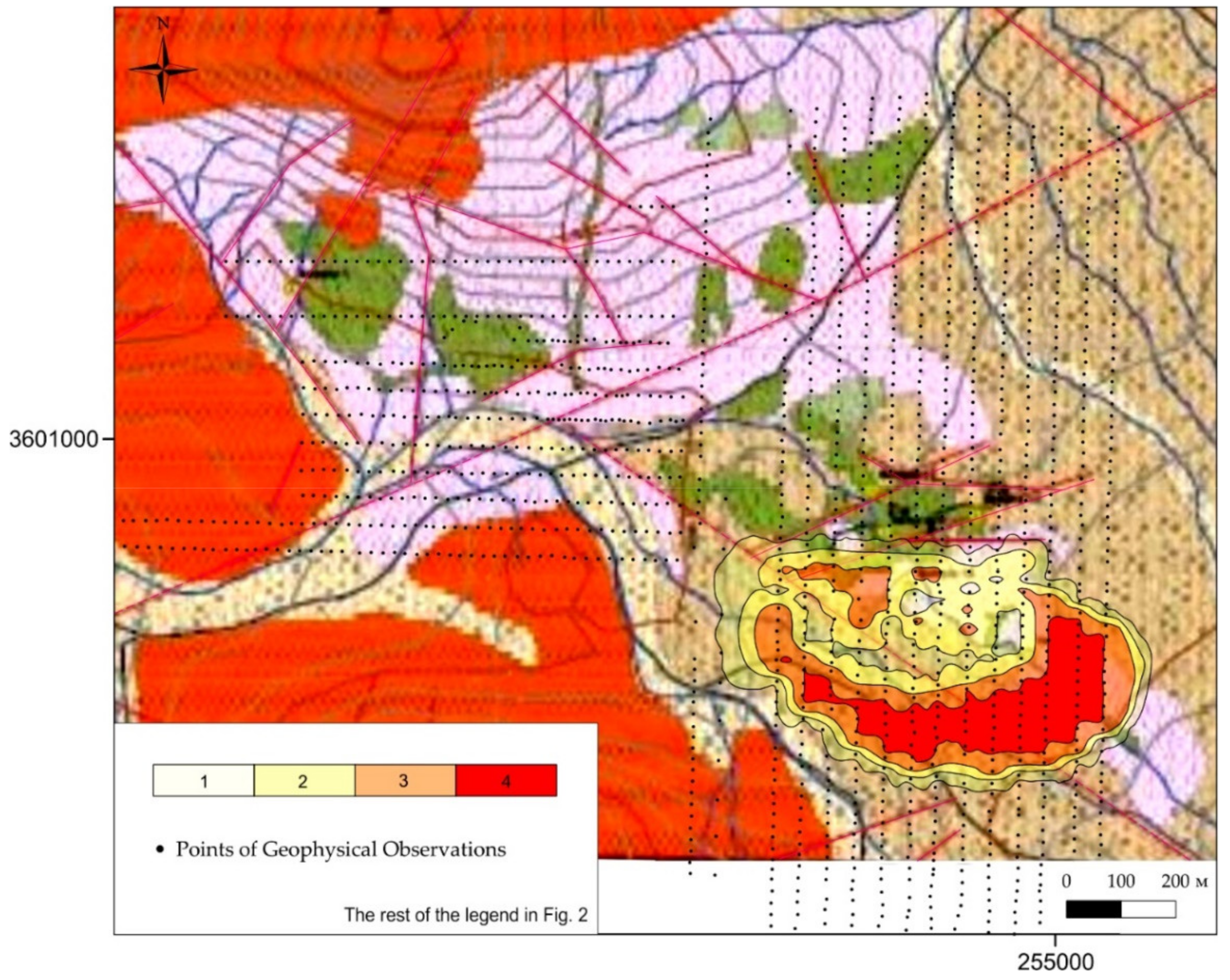
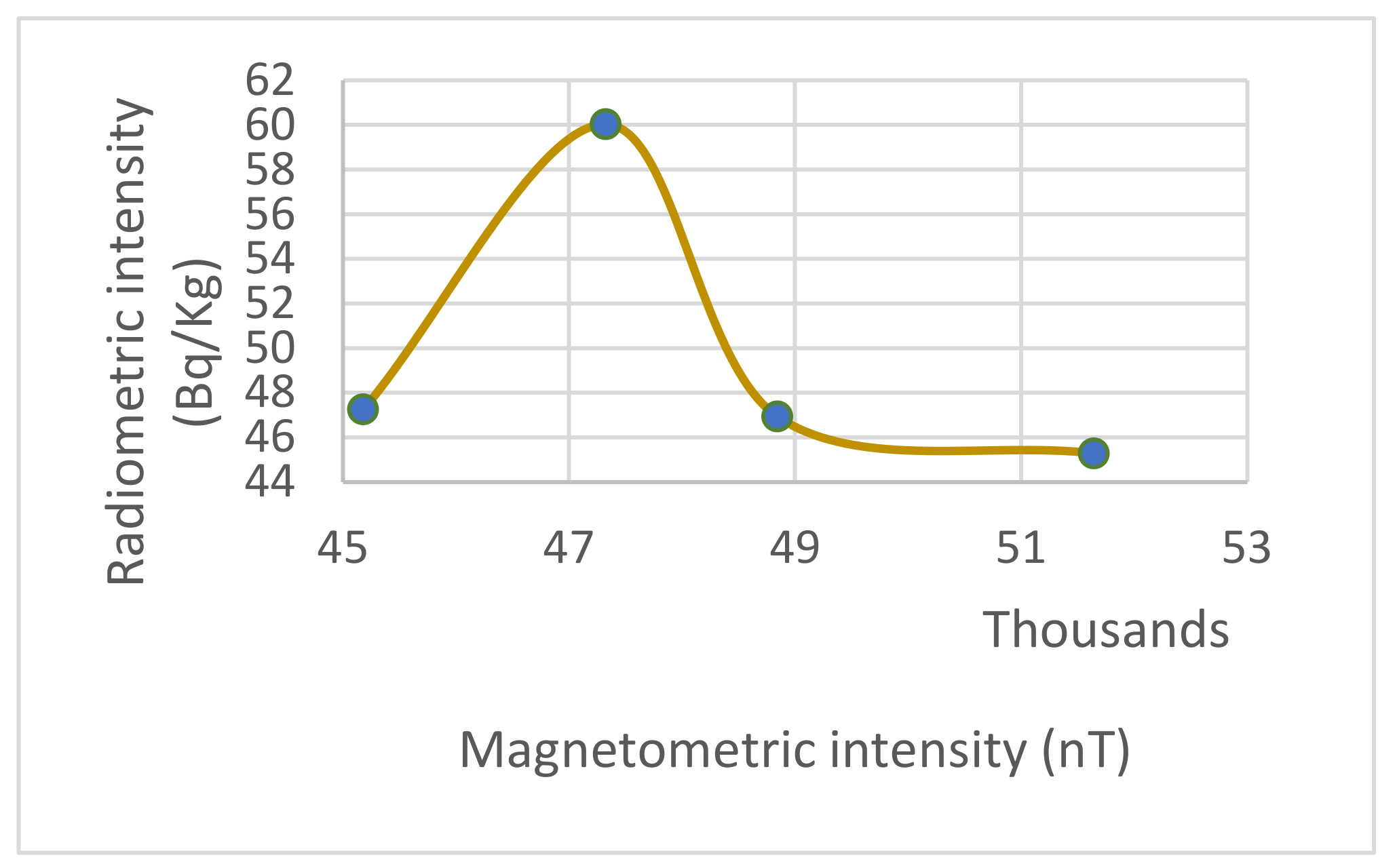

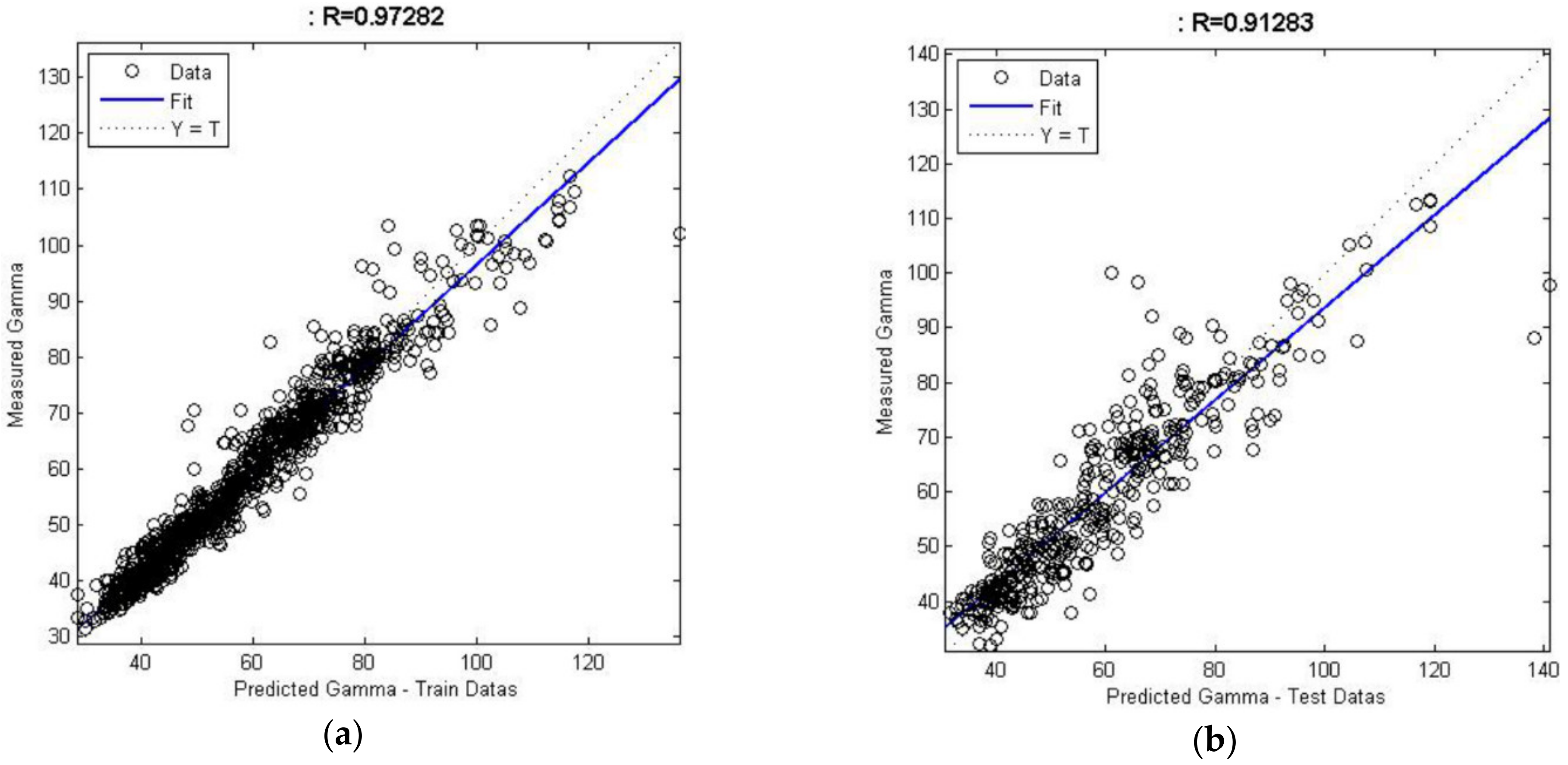

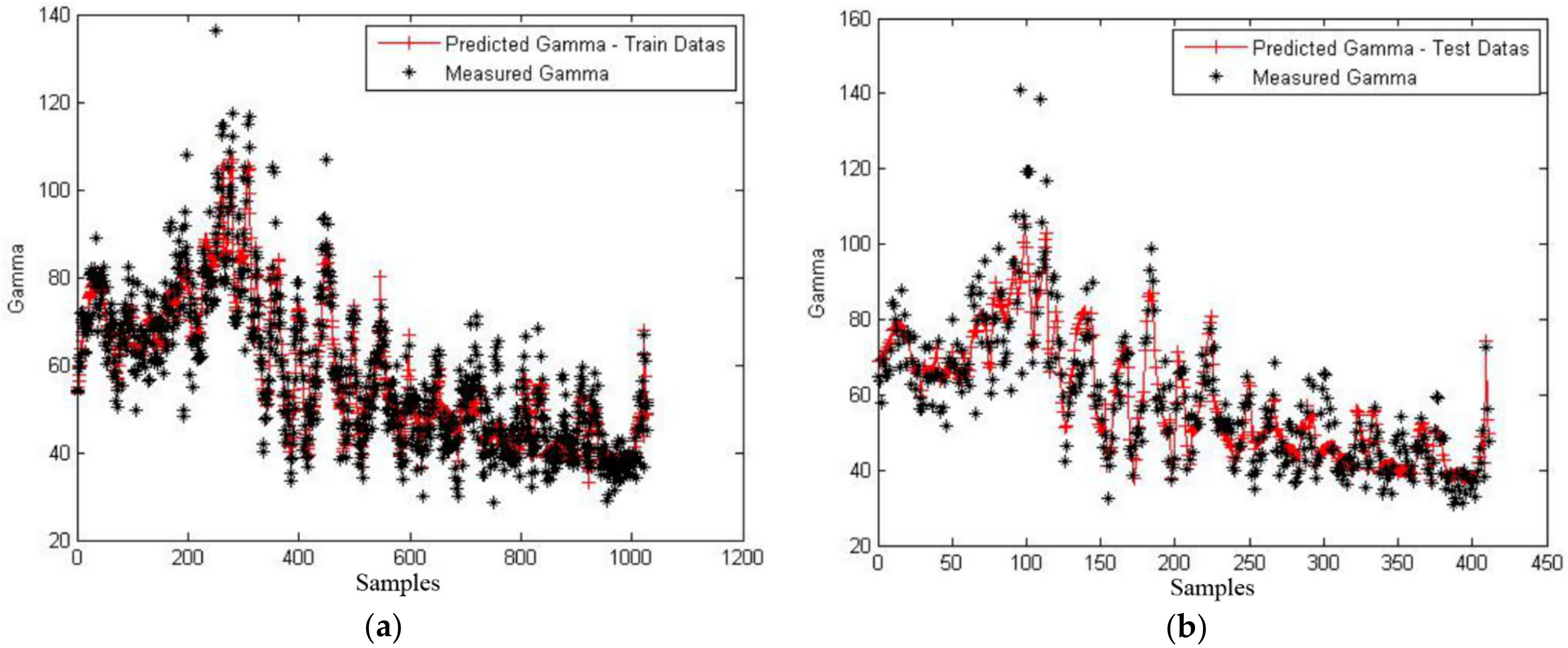
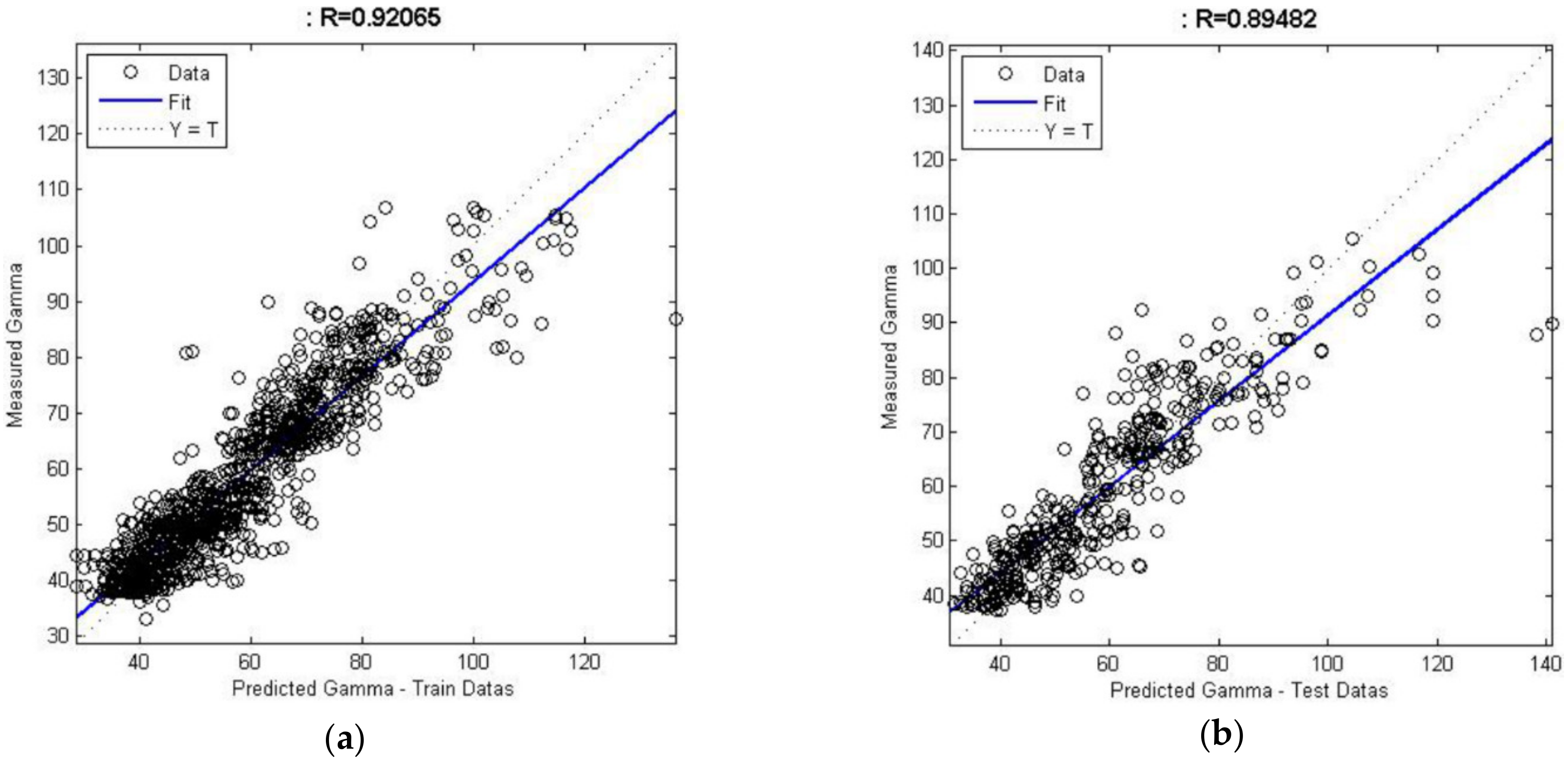
| p(k) | Number of Clusters | Parameters |
|---|---|---|
| 6937/0 | 3 | Measurements without Location |
| 7898/0 | 4 | |
| 6998/0 | 5 | |
| 4845/0 | 6 | |
| 5046/0 | 7 | |
| 2774/0 | 8 | |
| 4490/0 | 9 | |
| 5452/0 | 10 | |
| 2042/0 | 3 | Measurements with Location |
| 2321/0 | 4 | |
| 3701/0 | 5 | |
| 5775/0 | 6 | |
| 3767/0 | 7 | |
| 4843/0 | 8 | |
| 2116/0 | 9 | |
| 3176/0 | 10 |
| X | Y | Radiometry (Bq/Kg) | Magnetometry (nT) | Cluster |
|---|---|---|---|---|
| 253952.7 | 3601024 | 74 | 47,356 | First |
| 254764.3 | 3600361 | 50 | 47,998 | Second |
| 254789.2 | 3601391 | 54 | 47,230 | Third |
| 254797.9 | 3600956 | 45 | 46,953 | Fourth |
| 254649.8 | 3600745 | 48 | 44,865 | Fifth |
| 254783.6 | 3600612 | 46 | 51,147 | Sixth |
Publisher’s Note: MDPI stays neutral with regard to jurisdictional claims in published maps and institutional affiliations. |
© 2021 by the authors. Licensee MDPI, Basel, Switzerland. This article is an open access article distributed under the terms and conditions of the Creative Commons Attribution (CC BY) license (https://creativecommons.org/licenses/by/4.0/).
Share and Cite
Shirazy, A.; Hezarkhani, A.; Timkin, T.; Shirazi, A. Investigation of Magneto-/Radio-Metric Behavior in Order to Identify an Estimator Model Using K-Means Clustering and Artificial Neural Network (ANN) (Iron Ore Deposit, Yazd, IRAN). Minerals 2021, 11, 1304. https://doi.org/10.3390/min11121304
Shirazy A, Hezarkhani A, Timkin T, Shirazi A. Investigation of Magneto-/Radio-Metric Behavior in Order to Identify an Estimator Model Using K-Means Clustering and Artificial Neural Network (ANN) (Iron Ore Deposit, Yazd, IRAN). Minerals. 2021; 11(12):1304. https://doi.org/10.3390/min11121304
Chicago/Turabian StyleShirazy, Adel, Ardeshir Hezarkhani, Timofey Timkin, and Aref Shirazi. 2021. "Investigation of Magneto-/Radio-Metric Behavior in Order to Identify an Estimator Model Using K-Means Clustering and Artificial Neural Network (ANN) (Iron Ore Deposit, Yazd, IRAN)" Minerals 11, no. 12: 1304. https://doi.org/10.3390/min11121304
APA StyleShirazy, A., Hezarkhani, A., Timkin, T., & Shirazi, A. (2021). Investigation of Magneto-/Radio-Metric Behavior in Order to Identify an Estimator Model Using K-Means Clustering and Artificial Neural Network (ANN) (Iron Ore Deposit, Yazd, IRAN). Minerals, 11(12), 1304. https://doi.org/10.3390/min11121304










